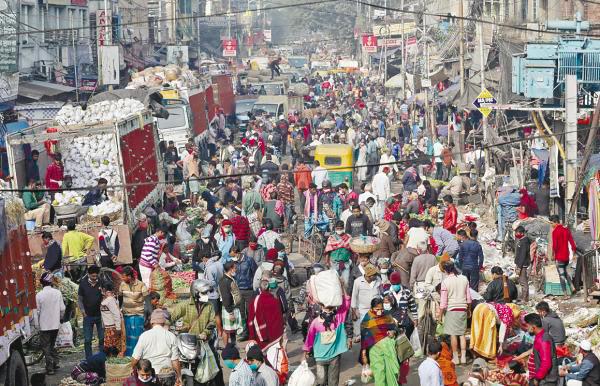WHEN the eight billionth child was born on Nov 15, 2022, it triggered a sharp “over-population versus over-consumption” debate between conservationists who sounded the alarm and traditionalists who labeled the concern as unfounded.
US billionaire entrepreneur Elon Musk tweeted two years ago: “I hope you have big families,” and many Hollywood stars who believe in an “under-population crisis” have fathered seven to 10 children.
For years, Malaysian leaders have been advocating for families to aim for four or five children, considering it an ideal number, which exceeds the replacement-level fertility rate of 2.1 children per woman on average. This is the rate at which a population replaces one generation with the next, assuming mortality rates remain constant. The figure is calculated to be 2.1 instead of two due to the fact that not all children survive to adulthood.
Malaysian law encourages high birth rates by granting tax relief for every unmarried child, with no limitations on the number of children.
Should the world’s population tagline be “the more, the merrier” or “less is better”?
Traditionalists argue that the focus should be on reducing over-consumption by rich nations and wealthy individuals in developing countries while allowing birth rates in poorer nations to rise. They make comparisons between Kenya, with a population of 55 million, and Wyoming in the US, with a tiny population of 600,000. However, Wyoming emits three times the carbon dioxide of Kenya.
The US is responsible for 14% of the global population’s carbon dioxide emission, whereas the whole of Africa emits less than half of that. Within a country, the CO2 footprint of a billionaire has been estimated to be around five times that of a person on welfare.
However, the argument that over-consumption and not over-population is the issue remains on the false assumption that impoverished nations and individuals generally are content to remain poor and desire the same fate for their children.
Two years ago, the non-governmental organization Global Footprint Network stated that if every individual on the planet adopted a lifestyle similar to that of citizens in India, we would only need 0.8 earth’s worth of capacity annually. India is a poor country, and a third of the world’s undernourished people live within its borders.
India does not want its citizens to live this way and has set its sights on becoming a developed country by 2047, with gross domestic product per person surpassing the World Bank’s high-income threshold.
Which country does not aspire to be rich? Indonesia has targeted 2050 to achieve parity with affluent nations, while Cambodia aims to double the exports from its factories.
Africa’s population may expand by another 900 million over the next 26 years by which Nigeria’s largest city Lagos may be home to 88 million people. However, African people also desire high standards of living. For example, Kenya wants its manufacturing sector to grow by 15% a year.
However, when the drive for strong economic growth is coupled with high birth rates, it is akin to having a drunken person behind the wheel of an overloaded trailer. A disastrous crash is imminent.
Let us trace the “more the merrier” signature line back to scripture. While the buzzword “multiply” was on the lips of Jews, Christians, Muslims, Hindus, Buddhists and Confucianists around the globe, it is important to bear in mind the time context of scriptural prescriptions. Time changes everything and there is no divine prescription applicable to human life that is valid for all time.
Imagine you have organized an open house lunch for 100 people at noon. At 10.30am, two guests arrive and you express hope for more visitors. However, by noon, only 60 people have eaten. You go to the neighborhood and invite everyone. By 12.30pm your house is packed with 120 people. You realize you cannot invite more neighbors as your food supply has run out.
An optimal human population for the world is the ratio of people to resources, with both sides equal. In scriptural times, a vast surplus of resources existed due to the small global population. Centuries after the composition of the Sikh scripture Sri Guru Granth Sahib , there were still less than one billion people inhabiting the planet. The one-billion mark was hit only in 1802.
The human population doubled to two billion in 1927, four billion in 1974, hit seven billion in 2010 and registered eight billion in 2022. Partygoers are hoping the 10 billion mark will be achieved shortly after 2050.
They are confident in their belief that the three largest religions will continue pushing for high birth rates in South America, Africa, West Asia, South Asia and parts of Southeast Asia. However, there is a need for all religious teachers of every denomination to interpret scripture wisely for the people so that they do not jeopardize the survival of humanity.
The famously quoted verse “Be fruitful and multiply” can be found in the biblical book of Genesis. The setting described is a planet with only two human beings named Adam and Eve. It is like your big open house lunch with only two guests initially. However, after these words, the verse goes on to state “Fill the earth and subdue it.”
However, by over-filling the earth we have over-subdued it, and the earth has run out of resources.
Politics has been another reckless driver of emerging birth rates in the developing world. Many ethnic or religious communities are driven to increase their numbers to expand their voter base and win elections. However, wielding power to advance parochial interests is a recipe for social disaster.
The silliest reason for pushing birth rates was given by a property consulting firm at a seminar in 2019. It called on women to make more babies to resolve the property overhang in Malaysia instead of blaming developers for overbuilding residential properties.
Every person makes an ecological footprint in that he needs housing, food, clothing, utilities, transportation and work. A swelling population means more natural habitats are converted into mining, agricultural, industrial and residential land. This leads to the extermination of wild animals and plant species.
Undeniably, resource use has far surpassed the planet’s capacity as evidenced by the alarming onset of climate change. Fortunately, birth rates are declining in many countries.
The fertility rates in Britain and the US stand at 1.7, Thailand at 1.5, Japan at 1.4, China at 1.3 and South Korea at 0.9. These figures significantly fall below the replacement rate of 2.1 children per woman, indicating a compensatory mechanism at play.
While Kenya’s fertility rate has dropped sharply to 3.4 from 6.7, it is still high. Many other African nations continue to register fertility rates of four to seven.
Many women in Malaysia now realize the impracticality of having four or five children. Mothers want to provide well for their children but due to the high cost of child raising and limited income, they know that the optimal number is three if they want their children to be successful.
Furthermore, studies show that exposure to pollution, plastics and prescribed medication as well as stressful living and consumption of highly processed foods may increase infertility in men and women.
Despite the economic challenges that may accompany a decline in birth rates, if all nations and communities were to achieve a decrease to the replacement rate of 2.1, it would represent a significant achievement aligning humanity more closely with nature.
The writer champions interfaith harmony.
Comments: letters@thesundaily.com











